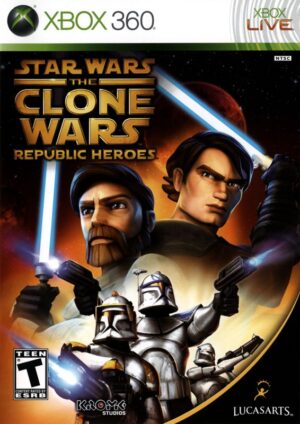Retro Replay Review
Gameplay
Final Fight on the SNES retains the core beat ’em up action that defined the arcade original, but several notable changes alter the pacing and strategy. With the factory level removed, the game’s length is slightly truncated, forcing players to focus on each of the remaining stages more intensely. This absence means you’ll encounter familiar foes in fewer environments, so mastering each area becomes crucial to avoid being overwhelmed.
(HEY YOU!! We hope you enjoy! We try not to run ads. So basically, this is a very expensive hobby running this site. Please consider joining us for updates, forums, and more. Network w/ us to make some cash or friends while retro gaming, and you can win some free retro games for posting. Okay, carry on 👍)
The SNES port limits the playable roster to Haggar and Cody, removing Guy entirely in this version—though a later re-release titled Final Fight Guy swaps Cody for Guy and tweaks the intro. Without Guy’s nimble moveset or the trio of characters from the arcade, you’ll rely heavily on Haggar’s grappling power or Cody’s balanced melee attacks. Each character still feels distinct, but the lack of a third option reduces the incentive for replaying with different styles.
Sprite limitations cap on-screen enemies at three, which can make encounters feel more manageable but also less chaotic than the arcade. While this restriction prevents the screen from becoming cluttered, it changes crowd-control tactics; you’ll rarely be swarmed by hordes, so timed strikes and careful positioning take priority over button-mashing through waves. The single-player-only format also removes the cooperative fun of teaming up with a friend, making the experience more solitary and methodical.
Graphics
The SNES’s graphical prowess shines through in its clean, vibrant sprites and detailed backgrounds, even if they’re slightly pared down from the arcade. Character animations remain smooth, with Haggar’s spinning backspin and Cody’s martial arts flourishes looking faithful to their original designs. Though the factory level is missing, stages like the subway and Chinatown bustles with colorful NPCs and environmental touches that bring Metro City to life.
Texture and color palettes differ somewhat in the US release, where all female enemy sprites were replaced with male versions. This change, along with slightly altered boss portraits, can feel jarring the first time you notice it—but overall the visuals still pack personality. The sprite swap is handled cleanly, and enemy animations remain fluid, maintaining the game’s combat readability and impact.
Despite occasional slowdown in crowded sections, the SNES handles the action admirably. Later reissues like Final Fight Guy reduce slowdown further and add extra life and invincibility pickups, but this original SNES version’s modest frame dips don’t derail the fun. The clear, bold outlines of characters and the atmospheric backgrounds showcase the console’s strengths, even under the hooded cap of sprite limits.
Story
Final Fight’s narrative is straightforward: Metro City is under siege by the Mad Gear Gang, and former pro wrestler Mike Haggar teams up with his daughter’s boyfriend to rescue Jessica. The SNES version keeps the essentials intact, driving you forward through beat-’em-up chapters to confront the gang’s ringleaders. Each stage’s backdrop hints at deeper urban decay, even if the tale itself is mostly told through sparse cutscenes.
The US release tweaks boss names—“Damnd” becomes Thrasher, and “Sodom” turns into Katana—to suit regional sensibilities. While the core motivations remain unchanged, these renamings signal a lighter localization approach that softens some of the arcade’s edgier elements. The infamous “Oh My God!” shout is humorously altered to “Oh My Car!”, a small change that underlines the game’s playful localization spirit.
In Final Fight Guy’s later release, the intro shifts perspective: Cody is supposedly off training in Japan, and Guy steps into the breach to save Jessica. This narrative tweak doesn’t significantly deepen the plot, but it provides a fresh angle for fans hungry for lore. Whether you play as Haggar, Cody or Guy, the story remains a simple but effective backdrop for brawling through Metro City’s underbelly.
Overall Experience
As a solo beat ’em up on the SNES, Final Fight offers a condensed yet still satisfying dive into side-scrolling action. The removal of one level and one character may disappoint arcade purists, but the core combat loop—picking up weapons, delivering combo strikes, and dunking foes in barrels—remains enormously fun. Haggar and Cody feel well-balanced, and the streamlined enemy encounters keep momentum high.
Differences in enemy design and boss naming give the US SNES version its own identity, and although some might prefer the arcade’s full roster or the multiplayer option, this port stands on its own merits. The occasional slowdown is a small trade-off for the clarity and performance that the SNES delivers in most situations, and repeated plays reveal nuances in enemy attack patterns that reward practice.
For prospective buyers, Final Fight on SNES is a strong addition to any classic collection. While it may not be the definitive arcade experience, its colorful graphics, punchy soundtrack cues, and refined two-character dynamic provide hours of beat-’em-up satisfaction. If you’re in it for solo brawling and appreciate the console’s hardware quirks, this version is well worth your time.
 Retro Replay Retro Replay gaming reviews, news, emulation, geek stuff and more!
Retro Replay Retro Replay gaming reviews, news, emulation, geek stuff and more!









Reviews
There are no reviews yet.